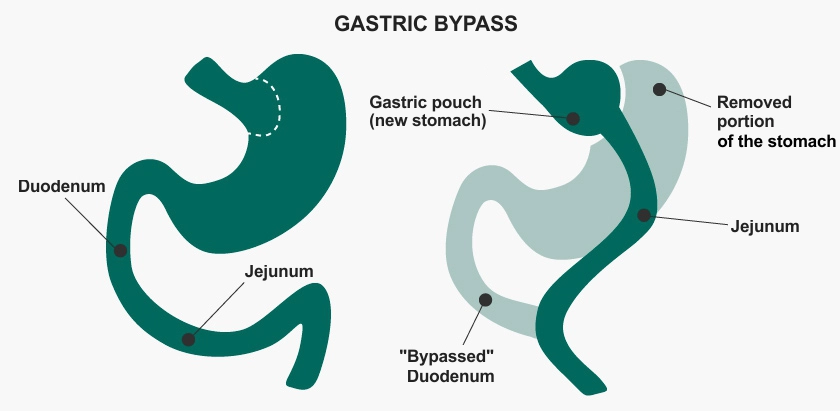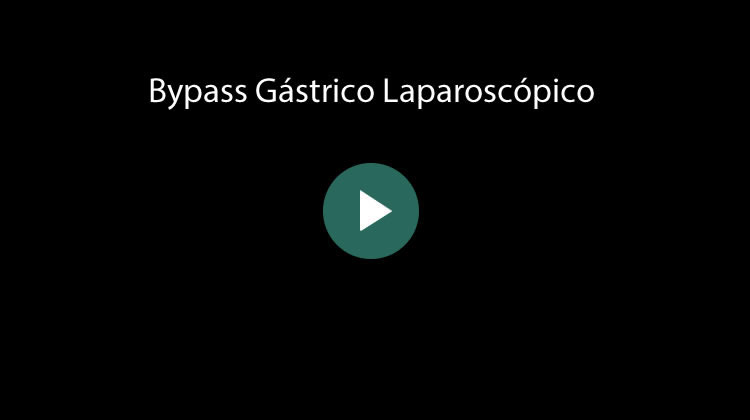LAPAROSCOPIC GASTRIC BYPASS – GBP
It is the ideal restrictive-malabsorptive (mixed) operation. GBP is the most performed procedure in the world throughout history, and also serves as the gold standard to compare with other new techniques.
It is slightly more effective than the Sleeve Gastrectomy against type 2 diabetes, although in patients with just overweight or Obesity I are similar. It also corrects dyslipidemia and hypertension in most patients.
We recommend this technique frequently, always under personalized criteria.
We have extensive experience with GBP.

WHAT IS A GBP?
Through 5 holes of 0.5 to 1 cm in the belly, we introduce the devices, camera, and endostaplers to perform the procedure without opening the abdomen. There are no visible scars. The stomach is reduced in size (much smaller than in the Sleeve) and we perform a bypass in digestion. This causes digestive juices get together with food in a more advanced point of digestion, which determines that a part of it, especially fats, are not absorbed.
WHO IS A GOOD CANDIDATE?
In general, it is indicated for patients with BMI> 40 or> 35 with comorbidities. Especially for BMI between 45 and 55.
It is particularly recommended for candy eaters, for patients with gastroesophageal reflux GERD and esophagitis (heartburn), and in patients with metabolic syndrome.
We also consider GBP a better option than the in patients with BMI 35 – 45 that can hardly follow a diet.
WHEN DO YOU BEGIN TO SEE THE EFFECT?
The most important weight loss occurs during the first 6 months, but extends to the first year and a half after surgery. By that time the weight stabilizes.
NEED FOLLOW UP?
Dietary and nutritional status need a long-term monitoring (all life long).
Otherwise anemia (iron deficiency), deficiency of vitamin B12 and folic acid, lack of calcium or zinc, which may require treatment may occasionally appear.
Follow up is as important as the surgical procedure itself to achieve greater and more sustained weight loss.
